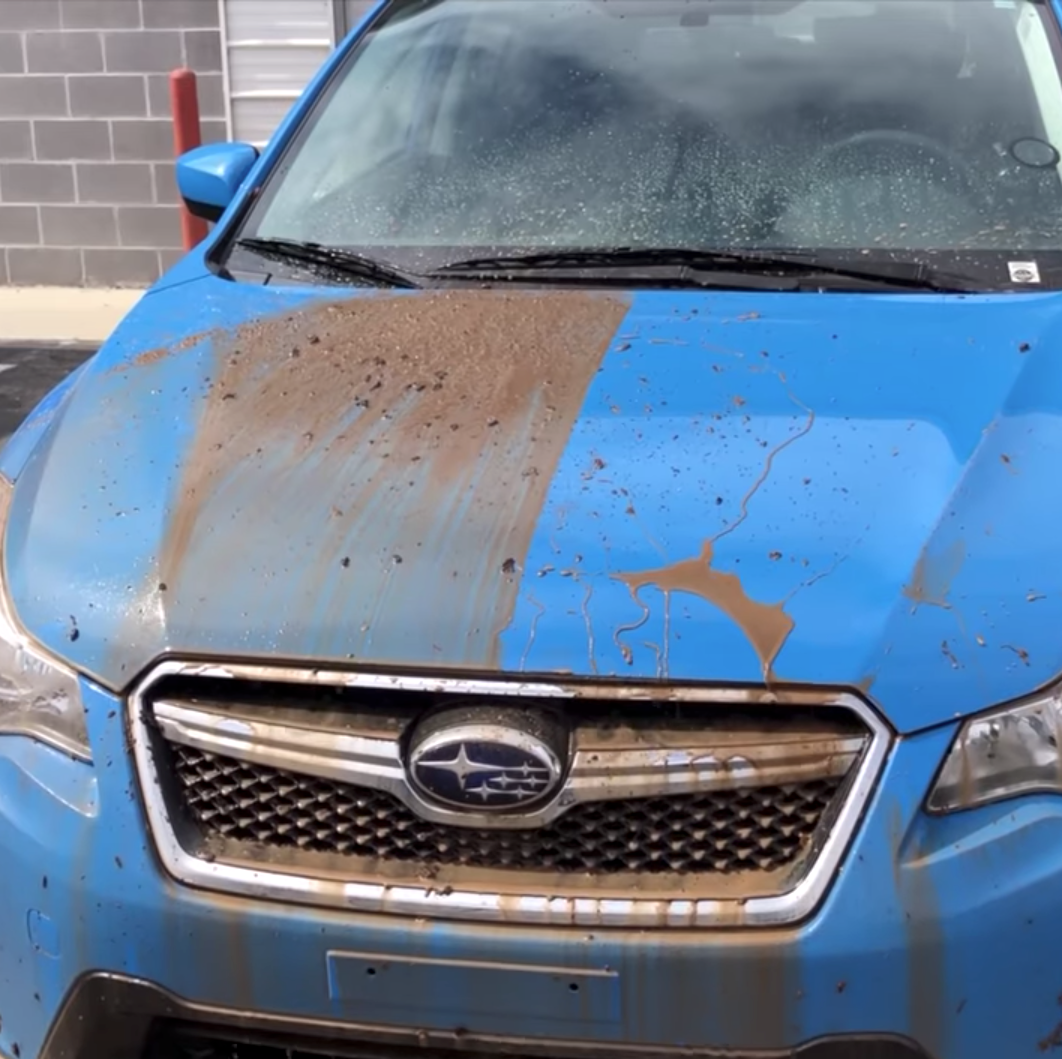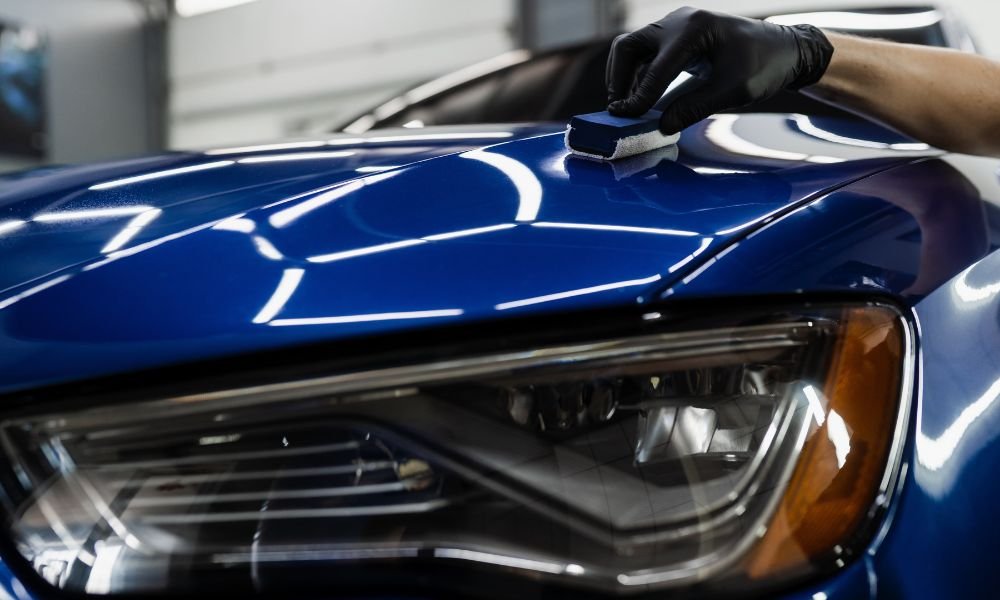Ceramic Coating Newark vs traditional wax — the pros and cons
Discovering the Scientific Research Behind Car Ceramic Coating and Its Protective Properties
The scientific research of car ceramic coating offers an interesting research study in sophisticated automotive protection. Composed mostly of silicon dioxide and polymers, these coatings create a robust bond with car paint. This communication enhances resilience versus environmental dangers while supplying hydrophobic benefits. However, the intricacies of exactly how these finishes work and their long-lasting benefits stay much less understood. Unpacking these details discloses why ceramic coatings are coming to be a recommended choice for automobile treatment
What Is Ceramic Coating?
Ceramic coating is a liquid polymer that chemically bonds to the surface area of an automobile's paint. This innovative safety layer enhances sturdiness and provides premium resistance to ecological elements. Unlike traditional wax or sealers, which supply short-lived defense, ceramic layers create a long-lasting shield that can stand up to harsh conditions such as UV rays, acidic contaminants, and severe climate. When used properly, the coating creates a hydrophobic surface area, creating water to bead and slide off, which assists in keeping the lorry's sanitation. In addition, it offers boosted gloss and deepness to the paint, making the car show up more refined and vivid. The application process commonly involves extensive surface preparation, consisting of cleaning and sprucing up, to assure peak bonding. Consequently, ceramic finishes are ending up being progressively popular amongst car fanatics and those seeking to protect their investments, guaranteeing to maintain the automobile's aesthetic allure while decreasing the frequency of maintenance.
The Composition of Ceramic Coatings
The elaborate formula of ceramic coatings mostly includes silicon dioxide (SiO2), which is acquired from natural resources like quartz and sand. This key part supplies the structure for the coating's longevity and protective qualities. Along with SiO2, ceramic coatings commonly include different polymers and additives that improve adhesion, flexibility, and resistance to ecological aspects. These substances function synergistically to create a durable barrier against impurities such as dirt, chemicals, and UV rays.Furthermore, some formulations integrate titanium dioxide (TiO2) or various other nanomaterials, which can boost the coating's hydrophobic buildings, causing enhanced water repellency. The exact make-up can differ greatly amongst producers, impacting performance and long life. Eventually, the mix of these elements finishes in a safety layer that not only enhances the visual charm of vehicles but also serves to extend their life expectancy by securing the surface from prospective damage.
Exactly How Ceramic Coatings Job
Understanding just how ceramic layers function includes discovering their chemical structure, which contributes to their protective high qualities. The application procedure is essential for attaining excellent outcomes, while durability and sturdiness factors identify the coating's effectiveness with time. Together, these aspects highlight the benefits and performance of ceramic layers for vehicle security.
Chemical Make-up Explained
While many car proprietors seek lasting security for their lorries, the chemical structure of ceramic coatings plays a critical role in their efficiency. These layers mainly contain silicon dioxide (SiO2), which is derived from all-natural minerals. This compound creates a solid bond with the automobile's paint, producing a durable, safety layer. Furthermore, lots of ceramic finishings have titanium dioxide (TiO2), improving their hydrophobic residential properties and resistance to UV rays. The presence of polysiloxanes can even more boost adaptability and longevity. Together, these elements add to the coating's capacity to push back water, dust, and pollutants, while additionally offering a high-gloss surface. Understanding this chemical foundation aids car owners value the durable protection used by ceramic finishes.
Application Refine Overview
Using ceramic coatings involves a meticulous procedure that assures perfect bonding and defense for the automobile's surface. At first, detailed cleansing and decontamination of the car's exterior are done to remove dust, crud, and previous waxes. This action confirms that the surface area is devoid of contaminations that can hinder bond. Following this, the paint is often polished to enhance clarity and eliminate any blemishes. As soon as prepared, the ceramic coating is used in small sections using an applicator pad, enabling consistent insurance coverage. The coating is then delegated heal, forming a strong chemical bond with the surface area. Appropriate healing times and problems are essential, as they verify the coating achieves its maximum efficiency and safety high qualities.
Long Life and Toughness Variables
Ceramic finishings are created to provide long-lasting defense through their innovative chemical make-up, which creates a durable obstacle versus ecological impurities. The toughness of these finishes is affected by elements such as the thickness of the application, the quality of the product, and the problems under which the car is revealed. High-quality ceramic layers can last numerous years, standing up to scrapes, UV rays, and chemical discolorations. Correct upkeep, consisting of routine cleaning and periodic reapplication, can even more boost long life. In addition, environmental factors like climate and direct exposure to pollutants can affect the life-span of the coating. On the whole, when used and preserved properly, ceramic finishes offer outstanding durability, making them a prominent choice for car enthusiasts looking for to preserve their vehicle's appearance.
Hydrophobic Residences and Water Repellency
Hydrophobic properties are a hallmark of quality car ceramic finishings, substantially improving the vehicle's surface area performance. These coverings produce a molecular bond with the car's paint, causing a surface that pushes back water successfully. When water enters into contact with a ceramic-coated surface, it grains up and rolls off, lessening the quantity of liquid that continues to be on the paint. This actions not only adds to an aesthetically pleasing look yet likewise reduces the buildup of contaminants such as dirt, grime, and roadway salts.The improved water repellency causes simpler cleansing and upkeep, as less initiative is needed to remove undesirable compounds. In addition, the hydrophobic nature of ceramic finishes helps in stopping water areas, which can mar the coating of uncoated surface areas. In general, the unification of hydrophobic homes in ceramic layers plays a crucial function in keeping the car's excellent appearance while simplifying upkeep.
Protection Versus Scratches and UV Damages
Car my latest blog post ceramic layers offer considerable defense versus scrapes and UV damages. The scrape resistance system develops a resilient layer that soaks up impacts, while the UV shielding benefits help maintain the vehicle's paint integrity with time. Together, these attributes add to a longer-lasting and visually attractive surface.
Scrape Resistance Mechanism
Utilizing sophisticated innovation, ceramic finishes supply a robust shield versus scratches and UV damages, improving the longevity and look of automobile surfaces. The scrape resistance device of these finishings is credited to their special molecular framework, which forms a long lasting bond with the lorry's paint. This bond develops a hard, safety layer that can take in effects and resist abrasions. Furthermore, the smooth surface area of the coating minimizes friction, making it difficult for contaminants to stick and create scrapes. The chemical make-up of ceramic finishes often includes nanoparticles that strengthen the safety layer, more enhancing its strength. Automobiles treated with ceramic layers exhibit noticeably boosted scrape resistance contrasted to conventional wax or sealers, guaranteeing a pristine coating over time.
UV Shielding Perks
The protective high qualities of ceramic coatings prolong past scrape resistance to include significant UV securing advantages. These finishes develop a robust obstacle that mirrors unsafe ultraviolet rays, guarding the automobile's paint and underlying products. Extended exposure to UV radiation can result in fading, oxidation, and deterioration of the paint finish. By incorporating ceramic finishes, top article vehicle proprietors can efficiently reduce these threats, protecting the aesthetic charm and honesty of their vehicles. In addition, the UV blocking homes contribute to enhanced durability, minimizing the regularity of painting and maintenance. Eventually, the assimilation of ceramic coatings uses a complete option for securing lorries from the damaging effects of sunlight direct exposure, guaranteeing a continual, lively appearance gradually.
The Long life and Maintenance of Ceramic Coatings

Often Asked Inquiries
Can Porcelain Coating Be Applied to Any Type Of Type of Car?
Ceramic coating can be related to various sorts of automobiles, including autos, trucks, and motorcycles. However, surface area preparation and compatibility with certain materials are essential for suitable adhesion and efficiency of the coating.
Just How Much Does Ceramic Coating Usually Price?
Ceramic coating usually costs in between $500 and $2,000, relying on variables such as lorry dimension, coating top quality, and professional application. The financial investment can give lasting defense and improve the vehicle's appearance in time.

Is Professional Application Necessary for Finest Results?
The need of expert application often depends on desired outcomes. Professionals commonly guarantee correct surface prep work and application techniques, causing optimal visit this site right here bonding and durability of the coating, which might be testing for unskilled people to accomplish.
Can Ceramic Coatings Be Gotten Rid Of or Fixed?
Ceramic finishes can be removed or fixed, though the procedure might call for particular solvents or strategies - Ceramic Coating Newark. Correct elimination is necessary to stay clear of damage to the underlying surface, stressing the significance of expert help for perfect outcomes
Exactly How Does Porcelain Coating Contrast to Conventional Wax?
The contrast between ceramic coating and conventional wax exposes that ceramic layers use premium durability, improved protection against environmental contaminants, and longer-lasting sparkle, while wax needs more frequent application and gives much less total resistance to damage.